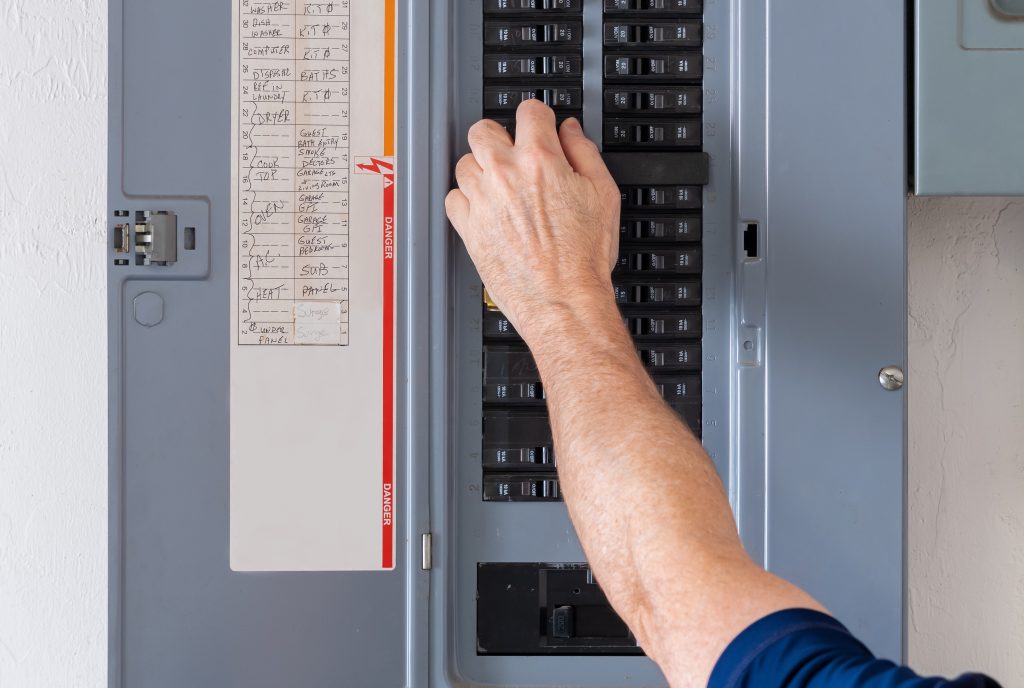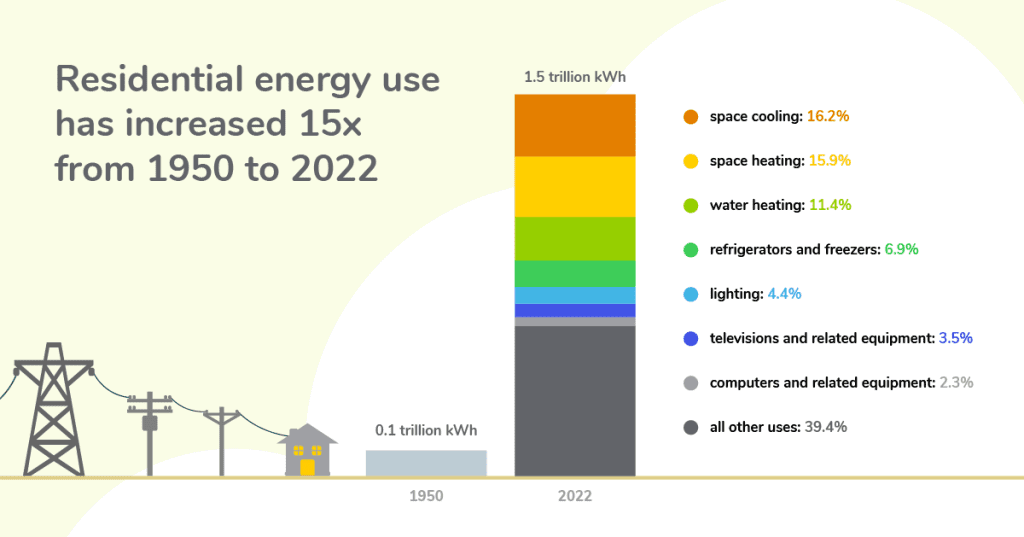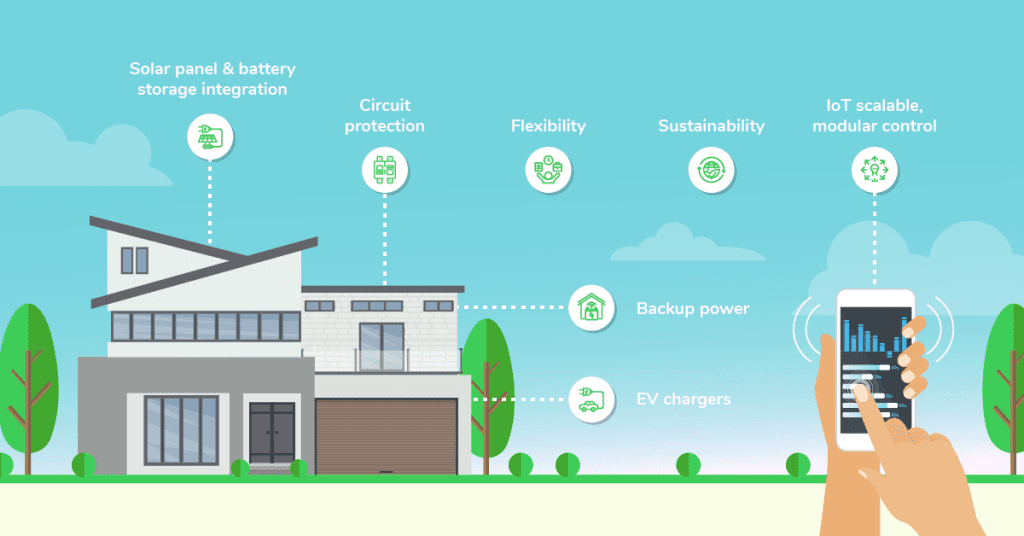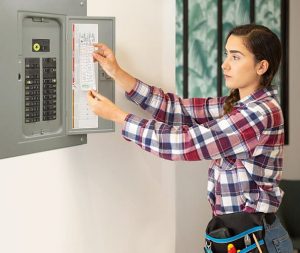As the world embraces more sustainable energy sources to protect the planet’s future, we are now increasingly reliant on electricity in the form of solar panels, backup batteries, and heat pumps in our homes. However, this shift to mass electrification can cause a strain to the home’s electrical panel as we know it.
And, while Schneider Electric’s recent survey found that over 29% of consumers don’t know what the electrical panel’s function is, its role is vital in ensuring the safe and effective distribution of electricity throughout the home.

As the point of final distribution of electricity for the entire home, the electrical panel is adapting to secure its place within the new energy landscape. It needs to safely integrate and coordinate an increasingly heavier and more complex flow of electricity. So, how does it evolve as we move towards the electrification of homes in order to provide efficiency, and balance supply and demand?
What does the new energy landscape look like?
According to the U.S. Energy Information Administration, residential electricity use has increased by 15x from 1950 to 2022 — from an electricity usage of 0.1 trillion kWh to 1.5 trillion kWh. Clearly, homes have been experiencing an ever-increasing electrical demand, and with high-use items such as electrical vehicle chargers and heat pumps being introduced, this will only continue.

Further complexity is added given the growing uptake of renewables like solar, which can generate and store energy within a battery for future use or as backup during power outages. Homeowners are no longer just energy consumers, as setups like this make them now a prosumer, capable of producing their own energy as well as consuming it.
As the different ways of using electricity in our homes continue to increase, the electrical panel will need to get smarter in its management, consumption, and storage of energy.
How will the electrical panel evolve?
This production, storage, and bidirectional flow of electricity must be coordinated precisely to ensure safety from the home to the grid. The smart panel is where that happens, as it is responsible for handling both source and load management. From balancing loads to ensuring that energy flow to the grid is shut down properly during an outage to avoid dangerous back feeding to the grid, the electrical panel is going to have an increasingly important role to play.
The panel will also need to manage electricity usage to be as efficient as possible. With more and more electrical appliances being brought into the home, electricity usage will continue to grow. Not only will this put strain on the electrical grid, but it will also put a strain on the available service at each home. Smart panels will need to help use energy as efficiently as possible and balance that usage to minimize the need for costly utility upgrades.
How will this help homeowners?
In addition to keeping the home protected from electrical faults and fires, a smart electrical panel is also designed to enhance the overall homeowner experience with modern capabilities, such as automation of energy management that makes their home more efficient and sustainable.
For example, solutions like Schneider Pulse panel have apps that can automatically schedule the charging of electric vehicles (EVs) during off-peak hours when rates are lower or run electrical appliances on power stored in a battery instead of relying on the grid during peak hours to help reduce electricity costs. Through the Schneider Home app, Pulse also offers convenient energy-saving settings like Low Power mode, to reduce waste and save money.
What to look for in a smart electric panel?
Smart electrical panels are a relatively recent technological development, so electricians have a key role to play in helping their customers understand the benefits and make the right choice to ensure that the panel can safely meet the demands of the new energy landscape. So, what are the key features to look for?

Simplified solar/storage integration
Integration with renewable energy sources, including solar power panels and battery storage systems, is key to support sustainability and provide a system that manages energy efficiently and seamlessly. With the right electrical panel, such as Schneider Pulse panel, the installation of solar power and battery storage can be completed much quicker by eliminating the need for a subpanel and load relocation.
Streamlined installation
And when it comes to easier installation, it doesn’t just stop at solar. Regardless of whether you’re fitting an electrical panel to work with solar or not, a solution that is easy to install will always be the preferred option. The Schneider Pulse panel, for instance, consolidates up to five panels in one, cutting down installation time as there are fewer enclosures. Wiring space is also a factor. A panel like Pulse has ample wiring space — almost twice as much as the standard panel — to make wiring easier. And when it comes to maintenance, be sure you can replace relays without the need for rewiring.
Scalable, modular control
A scalable design with modular load control offers ultimate homeowner flexibility, enabling the user to change which loads are critical and non-critical without the need for rewiring or being committed to keeping the set up from the point of installation. This means that homeowners can customize, personalize, and control specific appliances and systems, with the option to choose from partial or whole-home backup. Not only does this allow the user to work and control what they want within their own budget when it comes to home energy management, but it also offers maximum flexibility and convenience.
Intelligent load throttling
It is estimated that roughly 40 million homes in the US will need a utility service upgrade to install high-use appliances like EV chargers. It can be extremely expensive and take months to get an upgrade to existing utility service especially if it requires a transformer upgrade. This is an expense and delay that homeowners are not expecting as part of a heat pump or EV charger installation. A smart panel with intelligent load throttling can help minimize the need to upgrade utility service and get you and you client on the way to completing the installation sooner and for less money.
Flexibility
A smart panel should offer users an all-round flexible experience — regardless of whether the customer requires partial or whole home backup. Therefore, a panel that can adapt to user preferences, reference real-time data for change, automate energy use, and allow for loads to be easily relocated is a smart investment.
Trusted electrical expertise
While technology of smart panels is exciting, the panel’s core job of safe distribution of electricity is paramount. With this in mind, it is vital to choose smart panel solutions from trusted manufacturers with a time-tested history of expertise in providing safe, reliable, high quality circuit protection. Use those you know you can trust, such as Schneider Electric, that certify their products to the highest standards and recognized NRTLs (Nationally Recognized Testing Laboratories) and offer world-class customer support and long-lasting warranties.
Schneider Electric has almost 180 years of expertise, not only in creating solutions that support energy management, but in protecting homes from electrical faults too, with products such as its Square D Home Circuit Breakers.
The transformation that the energy landscape is undergoing demands a significant change in the way residential electrical loads are managed. As we continue to adopt high-powered appliances and bidirectional and renewable solutions, investment in smart electrical panels is not only a necessity to allow homeowners to maximize use of their available amperage and enhance safety, but it will give the homeowner control over their energy use. With features that allow for the management of energy in a flexible, scalable and sophisticated way, the introduction of smart electrical panels is one of the most innovative ways to prepare our homes for what lies ahead.
Learn more about Schneider Electric’s range of smart panel and energy management solutions, visit here




Add a comment